
Overview
The wastewater treatment industry is tasked with managing and purifying wastewater before its discharge into the environment or reuse, playing a pivotal role in safeguarding public health and ecosystems. Through a series of physical, chemical, and biological processes, contaminants including solids, organic matter, nutrients, pathogens, and pollutants are removed from wastewater. This involves various methods such as screening, sedimentation, biological oxidation, filtration, and disinfection, often incorporating advanced technologies like membrane filtration and UV disinfection. Stakeholders including government bodies, municipalities, private companies, and research institutions collaborate to establish and enforce regulations, standards, and innovative solutions aimed at enhancing wastewater treatment efficiency and sustainability. With increasing concerns about water scarcity, pollution, and climate change, the industry continually adapts, embracing advancements like resource recovery and decentralized treatment systems to address emerging challenges and promote environmental stewardship.
Depending on specific features and functions, GAO Tek’s other environmental testers are sometimes referred to as devices, instruments, tools, equipment, environmental analyzers, gadgets, apparatus, systems, machines, devices, and instruments.
Furthermore, GAO Tek’s other environmental testers are further grouped into: air quality, circuit parameter, handheld, material quality, outdoor, soil quality, and surface hardness.
GAO Tek’s other environmental testers have the following applications in the wastewater treatment industry:
- PH Meters: GAO’s other environmental testers offer a range of pH meters equipped with features such as high accuracy and resolution, automatic temperature compensation, and user-friendly interfaces, making them suitable for precise pH measurement in wastewater.
- Dissolved Oxygen (DO) Sensors: GAO Tek’s other environmental testers provide DO sensors capable of accurately measuring dissolved oxygen levels in wastewater. These sensors may feature rugged designs, low maintenance requirements, and compatibility with various measurement ranges.
- Turbidity Sensors: GAO’s other environmental testers offer turbidity sensors designed to measure suspended solids concentration in wastewater with high precision and reliability. These sensors may include advanced optical or infrared measurement technologies, along with user-adjustable calibration options.
- Conductivity Meters: GAO Tek’s other environmental testers’ conductivity meters are capable of accurately measuring the conductivity of wastewater, providing insights into salinity and total dissolved solids content. These meters may feature multiple conductivity ranges, automatic temperature compensation, and durable construction for reliable operation in harsh environments.
- Total Suspended Solids (TSS) Analyzers: GAO’s other environmental testers offer TSS analyzers designed to measure suspended solids concentration in wastewater samples. These analyzers may utilize various measurement principles, such as gravimetric or optical methods, to provide accurate TSS measurements.
- Chemical Oxygen Demand (COD) Analyzers: GAO Tek’s other environmental testers provide COD analyzers capable of accurately determining the chemical oxygen demand of wastewater samples. These analyzers may feature advanced digestion and titration techniques for reliable COD measurement.
- Ammonia (NH3) Sensors: GAO’s other environmental testers offer ammonia sensors designed to detect ammonia concentration in wastewater samples. These sensors may feature high sensitivity, low detection limits, and rapid response times for real-time monitoring of ammonia levels.
- BOD (Biochemical Oxygen Demand) Analyzers: GAO Tek’s other environmental testers provide BOD analyzers capable of accurately measuring the biochemical oxygen demand of wastewater samples. These analyzers may utilize respirometric or titrimetric methods for BOD analysis, offering reliable results for process control and regulatory compliance.
More information on other environmental testers and their applications in other industries can be found other environmental testers. This category page lists related products environmental.
Systems in the Wastewater Treatment Industry Utilizing Other Environmental Testers
Here are some popular systems in the wastewater treatment industry using other environmental testers:
Wastewater Treatment System:
- Water Quality Analysis Software: This software provides a comprehensive analysis of water quality data collected by environmental testers, aiding in identifying contaminants and optimizing treatment processes in wastewater treatment plants.
- Process Monitoring and Control Software: This software integrates with environmental testers to monitor and control various parameters in real time, ensuring efficient operation and compliance with regulatory standards in wastewater treatment facilities.
Environmental Monitoring System:
- Remote Monitoring Platform: This platform allows remote access and monitoring of environmental data collected by testers, enabling proactive management of wastewater treatment processes and timely response to any anomalies.
- Data Visualization Software: This software translates complex environmental data into visual representations such as graphs and charts, facilitating easy interpretation and decision-making for optimizing wastewater treatment operations.
Laboratory Information Management System (LIMS):
- Quality Control Software: This software ensures the accuracy and reliability of laboratory data collected from wastewater samples, supporting quality control measures and regulatory compliance in wastewater treatment facilities.
- Sample Tracking Software: This software tracks the lifecycle of wastewater samples from collection to analysis, providing traceability and accountability in laboratory workflows for effective management of sample processing.
Real-Time Monitoring System:
- Automated Alerting Software: This software sends alerts and notifications based on predefined thresholds or criteria, allowing operators to promptly address any deviations or issues in wastewater treatment processes.
- Predictive Analytics Software: This software utilizes machine learning algorithms to analyze historical and real-time data, predicting potential issues or trends in wastewater treatment operations and facilitating proactive decision-making for process optimization.
Compliance Management System:
- Regulatory Compliance Software: This software assists in ensuring compliance with environmental regulations and standards governing wastewater treatment, providing tools for documentation, reporting, and audit preparation.
- Audit Trail Software: This software maintains a detailed audit trail of activities and changes in wastewater treatment processes and data, supporting transparency and accountability in regulatory compliance efforts.
GAO Tek’s targeted markets are North America, particularly the U.S. and Canada.
Complying with Government Regulations
GAO Tek’s other environmental testers comply or help our customers comply with the U.S. government regulations such as:
- Clean Water Act (CWA)
- National Pollutant Discharge Elimination System (NPDES)
- Safe Drinking Water Act (SDWA)
- Effluent Limitations Guidelines (ELGs)
- Resource Conservation and Recovery Act (RCRA)
- National Environmental Laboratory Accreditation Program (NELAP)
- Toxic Substances Control Act (TSCA)
GAO Tek’s other environmental testers comply or help our clients comply with Canadian regulations such as:
- Canadian Environmental Protection Act, 1999 (CEPA)
- Wastewater Systems Effluent Regulations (WSER)
- Canadian Drinking Water Quality Guidelines (CDWQG)
- Provincial Environmental Regulations
- British Columbia Municipal Wastewater Regulation (MWR)
- Ontario Water Resources Act (OWRA)
- Alberta Environmental Protection and Enhancement Act (EPEA)
- Canadian Environmental Assessment Act (CEAA)
- National Pollutant Release Inventory (NPRI)
Case Studies of Other Environmental Testers in the Wastewater Treatment Industry
Other Environmental Testers are sometimes called devices, instruments, tools, equipment, environmental analyzers, gadgets, apparatus, systems, machines, devices, and instruments.
Here are some practical examples of using other environmental testers in the wastewater treatment industry:
In a wastewater treatment plant in New York City, the implementation of advanced microbial testing technology revolutionized the monitoring process. By utilizing state-of-the-art DNA-based microbial analysis systems, the facility significantly improved its ability to identify and quantify microbial populations in wastewater samples. This enhanced microbial testing capability enabled the plant operators to detect potential pathogens and assess microbial diversity more accurately. As a result, the plant could proactively adjust treatment processes to optimize efficiency and ensure compliance with regulatory standards, leading to improved water quality in the surrounding area.
In Boston, Massachusetts, a wastewater treatment facility adopted cutting-edge spectroscopy technology for real-time monitoring of organic contaminants in influent and effluent streams. By deploying advanced UV-Vis spectrophotometers with automated sampling capabilities, the plant could continuously analyze wastewater samples for organic pollutants such as phenols, polycyclic aromatic hydrocarbons (PAHs), and volatile organic compounds (VOCs). This real-time environmental testing approach provided invaluable insights into pollutant levels and variations, enabling the plant operators to promptly adjust treatment processes and mitigate potential environmental risks. As a result, the facility achieved more efficient wastewater treatment and enhanced environmental protection outcomes.
In Chicago, Illinois, a wastewater treatment plant implemented advanced nutrient monitoring technology to optimize nutrient removal processes and reduce nutrient discharge levels. By deploying sophisticated nutrient analyzers capable of measuring nitrogen and phosphorus concentrations in real time, the facility could precisely control nutrient dosing and biological treatment parameters. This proactive approach to nutrient management enabled the plant to achieve significant reductions in nutrient pollution, resulting in improved water quality downstream and compliance with stringent regulatory requirements.
In Detroit, Michigan, a municipal wastewater treatment facility upgraded its environmental testing capabilities by integrating online toxicity monitoring systems into its treatment processes. These advanced toxicity analyzers utilized bioluminescent bacteria to assess the overall toxicity of wastewater samples in real time. By continuously monitoring for acute toxicity levels, the plant could rapidly detect and respond to potential sources of pollution or contamination. This proactive toxicity monitoring approach enhanced the facility’s ability to safeguard public health and environmental quality, ensuring the effective treatment of wastewater before discharge into receiving waters.
In Atlanta, Georgia, a wastewater treatment plant implemented advanced gas chromatography-mass spectrometry (GC-MS) technology for comprehensive analysis of emerging contaminants in wastewater samples. By utilizing GC-MS instrumentation equipped with high-resolution mass spectrometers, the facility could identify trace levels of emerging pollutants such as pharmaceuticals, personal care products, and endocrine-disrupting chemicals. This advanced environmental testing approach provided valuable insights into potential water quality risks and allowed the plant to optimize treatment processes to address emerging contaminant challenges effectively.
In Houston, Texas, a large-scale industrial wastewater treatment facility deployed advanced heavy metals analyzers to monitor and control heavy metal concentrations in industrial effluent streams. By leveraging inductively coupled plasma-optical emission spectrometry (ICP-OES) technology, the plant could accurately quantify trace levels of heavy metals such as lead, mercury, and arsenic in real time. This proactive heavy metal monitoring strategy enabled the facility to implement targeted treatment measures and ensure compliance with discharge limits, thereby minimizing the environmental impact of industrial wastewater discharges on surrounding water bodies.
In Los Angeles, California, a wastewater treatment plant adopted state-of-the-art fluorescence spectroscopy technology for the rapid detection and characterization of dissolved organic matter (DOM) in wastewater samples. By utilizing fluorescence spectrophotometers equipped with advanced data analysis algorithms, the facility could assess the composition and origin of DOM components in real time. This enhanced environmental testing capability enabled the plant to optimize treatment processes for organic pollutant removal and enhance overall treatment efficiency, leading to improved water quality in the receiving environment.
In Seattle, Washington, a municipal wastewater treatment facility implemented advanced microbial source tracking (MST) techniques to identify and mitigate sources of fecal contamination in wastewater effluent. By employing cutting-edge molecular biology methods such as quantitative polymerase chain reaction (qPCR) and microbial DNA fingerprinting, the plant could differentiate between human and animal sources of fecal pollution with high specificity and sensitivity. This targeted approach to microbial testing facilitated the development of site-specific pollution control strategies and helped the plant mitigate potential public health risks associated with fecal contamination in treated wastewater discharges.
In Vancouver, British Columbia, a wastewater treatment plant deployed advanced gas chromatography-mass spectrometry (GC-MS) technology for comprehensive analysis of trace organic pollutants in wastewater samples. By utilizing GC-MS instrumentation equipped with high-resolution mass spectrometers, the facility could identify and quantify emerging contaminants such as pharmaceuticals, personal care products, and industrial chemicals. This advanced environmental testing approach provided valuable insights into potential water quality risks and helped the plant optimize treatment processes to address emerging contaminant challenges effectively.
In Toronto, Ontario, a municipal wastewater treatment facility adopted innovative membrane bioreactor (MBR) technology for enhanced nutrient removal and wastewater purification. By integrating advanced nutrient analyzers into the MBR system, the plant could monitor nitrogen and phosphorus concentrations in real time and optimize nutrient removal processes accordingly.
GAO RFID Inc. https://gaorfid.com, a sister company of GAO Tek Inc., is ranked as the top 10 RFID suppliers in the world. Its RFID, BLE, and IoT products have also been widely used in the wastewater treatment industry. Articles about related industries are given below:
Use of Other Environmental Testers with Leading Software and Cloud Services in the Wastewater Treatment Industry
GAO Tek has used or has facilitated its customers to use GAO’s other environmental testers with some of the leading software and cloud services in their applications. Examples of such leading software and cloud services include:
- Aquatic Informatics
- LIMS
- EQuIS
- WaterTrax
- EnviroInsite
- Hydromantis GPS-X
- DataCloud
- WIMS
- Hach WIMS
- ClearSCADA
- SCADAWatch
- WaterTrax Lab
GAO Tek’s other environmental testers and their applications in other industries are listed on other environmental testers.Other related products can be found on environmental.
Meeting Customers’ Demands
Large Choice of Products
In order to satisfy the diversified needs of their corporate customers, GAO Tek Inc. and its sister company GAO RFID Inc. together offer a wide choice of testing and measurement devices, network products, RFID, BLE, IoT, and drones.
Fast Delivery
To shorten the delivery to our customers, GAO has maintained a large stock of its products and is able to ship overnight within the continental U.S. and Canada from the nearest warehouse.
Local to Our Customers
We are located in both the U.S. and Canada. We travel to customers’ premises if necessary. Hence, we provide very strong local support to our customers in North America, particularly the U.S., and Canada.
Furthermore, we have built partnerships with some integrators, consulting firms, and other service providers in different cities to further strengthen our services. Here are some of the service providers in the wastewater treatment Industry we have worked with to serve our joint customers:
- Arcadis
- CH2M (now Jacobs)
- Wood PLC
- Stantec
- HDR, Inc.
- GHD Group
- Evoqua Water Technologies
- SUEZ Water Technologies & Solutions
- Xylem Inc.
- Veolia Water Technologies
- Jacobs Engineering Group
- Hatch Ltd.
- Wood PLC
- Morrison Hershfield Ltd.
- EXP Services Inc.
GAO has Many Customers in the Wastewater Treatment Industry
The products from both GAO Tek Inc. and GAO RFID Inc. have been widely used in the wastewater treatment industry by many customers, including some leading companies. Here is more information on applications of GAO RFID Inc.’s products in the wastewater treatment industry. Articles can be found below:
Here are some of GAO’s customers in the wastewater treatment industry:
- Veolia Water North America
- SUEZ Water Technologies & Solutions
- AECOM
- Evoqua Water Technologies
- Black & Veatch
- MWH Constructors (Stantec)
- Brown and Caldwell
- Carollo Engineers
- Garney Companies, Inc.
- CH2M (Jacobs)
- Tetra Tech, Inc.
- Wood PLC
- Hatch Ltd
- WSP Inc.
- SNC-Lavalin Group Inc.
- GHD Group
- Morrison Hershfield Ltd
- exp Services Inc.
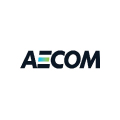




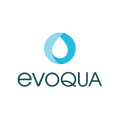





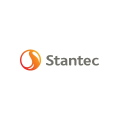
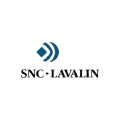
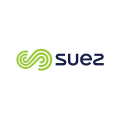
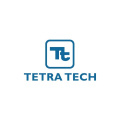



Contact Us
Here are GAO Tek’s other environmental testers and they are further organized by feature:
air quality, circuit parameter, handheld, material quality, outdoor, soil quality, and surface hardness
If you have any questions about our products or want to place an order, our technical experts can help you. Please fill out this form or email us.
